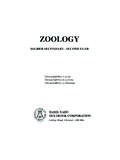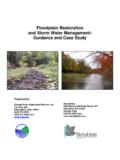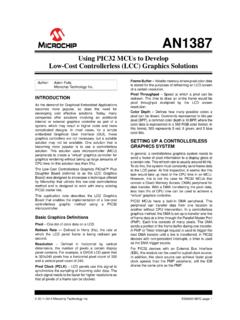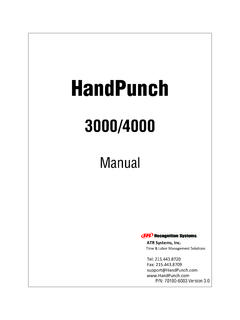Transcription of CHEMISTRY - Textbooks Online
1 CHEMISTRY . HIGHER SECONDARY - SECOND YEAR. VOLUME - I. Untouchability is a sin Untouchability is a crime Untouchability is inhuman TAMILNADU. TEXTBOOK CORPORATION. College Road, Chennai - 600 006. Government of Tamilnadu First Edition - 2005. Second Edition - 2006. Revised Edition - 2007. CHAIRPERSON & AUTHOR. Dr. Professor of CHEMISTRY (Retd.). Presidency College, (Autonomous), Chennai - 600 005. REVIEWERS. Dr. Professor of CHEMISTRY Presidency College (Autonomous) Chennai - 600 005. Dr. R. ELANGOVAN Dr. Joint Director, Sarva Shiksha Abhiyan Professor of Physical CHEMISTRY College Road, Chennai - 600 006.
2 University of Madras Dr. Chennai - 600 025. Professor and Head Dr. CHARLES CHRISTOPHER KANAGAM. Department of Inorganic CHEMISTRY Professor of CHEMISTRY University of Madras Presidency College (Autonomous). Chennai - 600 025. Chennai - 600 005. AUTHORS. Mr. , Mrs. , Lecturer in CHEMISTRY Teacher in CHEMISTRY , Academy of Maritime Education & Training, Higher Secondary School BITS (Ranchi) Ext. Centre, Virugambakkam, Chennai - 600 092. Kanathur-603 112. Mrs. , Mr. , Teacher in CHEMISTRY , Lecturer in CHEMISTRY Govt. Girls Higher Secondary School Arts College, Ashok Nagar, Chennai - 600 083.
3 Ponneri - 601 204. Dr. V. NARAYANAN, Mrs. STEPHEN, Lecturer in Inorganic CHEMISTRY in CHEMISTRY University of Madras, Chennai - 600 025. CSI Bain Mat. Hr. Sec. School Dr. K. SATHYANARAYANAN, Kilpauk, Chennai - 600 010. Teacher in CHEMISTRY , Stanes Anglo Indian Hr. Sec. School, Price : Rs. Coimbatore - 18. This book has been prepared by the Directorate of School Education on behalf of the Government of Tamilnadu. This book has been printed on 60 paper Printed by Offset at : (ii). PREFACE. CHEMISTRY , a branch of science concerned with the properties, structures and composition of substances and their reactions with one another.
4 Inorganic CHEMISTRY studies the preparation, properties and reactions of all chemical elements and their compounds, except those of carbon. Organic CHEMISTRY studies the reactions of carbon compounds, which are 100 times more numerous than nonorganic ones. It also studies an immense variety of molecules, including those of industrial compounds such as plastics, rubber, dyes, drugs and solvents. Physical CHEMISTRY deals with the Physical properties of substances, such as their boiling and melting points. The present book is included for the students of higher secondary second year.
5 For convenience sake this text book of CHEMISTRY is published in two volumes. This text book is written after following the revised syllabus, keeping in view the expectations of the National Council of Educational Research & Training (NCERT). This book will provide an inverted pyramid model to gain knowledge in all branches of CHEMISTRY . The topics such as Atomic Structure - II, Periodic Classification - II, Solid State - II, Thermodynamics - II, Chemical equilibrium - II, Chemical Kinetics - II, Electrochemistry - I and II are designed in such a way that students should have a continuous access to these topics.
6 Hence, the knowledge gained in higher secondary first year will help the students to have a continuous access to these topics. The knowledge gained in +1 will help the students to achieve excellence in the path of quest for chemical knowledge. Many problems are introduced in inorganic, physical and organic CHEMISTRY to enhance the quantitative aptitude of students. The quantitative aptitude will enable the students to understand the concepts well. The importance of CHEMISTRY is well known. A knowledge of CHEMISTRY will help anybody to understand biology, natural processes, geochemical concepts, pharmaceutical and biochemical concepts.
7 Hence this text book will enhance the image of the students in such a way that they can face any competitive examination in future. The problems in all branches of CHEMISTRY and many more mechanisms of organic chemical reactions will help the students to understand the chemical principles. (iii). Much informations about nobel laureates are given. These informations is not part of the syllabus. However, such information will help the students to know a lot about the scientists. The questions that are given at the end of every chapter can be taken only as model questions.
8 A lot of self evaluation questions, like, choose the best answer, one or two sentence answer type and short answer types questions are given in all chapters. While preparing the examination, students should not restrict themselves, only to the questions and problems given in the self evaluation. They must be prepared to answer the questions and problems from the entire text. Learning objectives may create an awareness to understand each chapter. Sufficient reference books are suggested so as to enable the students to acquire more informations about the concept of CHEMISTRY .
9 Dr. V. BALASUBRAMANIAN. Chairperson Syllabus Revision Committee ( CHEMISTRY ). & Higher Secondary Second Year CHEMISTRY Text Book Writing Committee (iv). Syllabus : Higher Secondary - Second Year CHEMISTRY Volume - I. INORGANIC CHEMISTRY . Unit 1 - Atomic Structure -II. Dual properties of electrons - de-Broglie relation - Heisenberg's uncertainty principle - Wave nature of an electron - Schrodinger wave equation (only equation, no derivation) - Eigen values and Eigen function- significance only - molecular orbital method. Application to Homo diatomic and Hetero diatomic molecules - Metallic Bond - Hybridization of atomic orbitals Hybridization involving s, p and d Orbitals - Types of forces between molecules.
10 Unit 2 - Periodic classification-II. Review of periodic properties - Calculation of atomic radii - Calculation of ionic radii - Method of determination of Ionisation potential - Factors affecting ionisation potential - Method to determine the electron affinity - Factors affecting EA - Various scales on electro negativity values. Unit 3 - p - Block Elements - II. Group -13 General trends - Potash alum- Preparation, Properties and uses - Group 14 General trends - Silicates - Types and structure - Silicones - Structure and uses - Extraction of lead - Group - 15.










